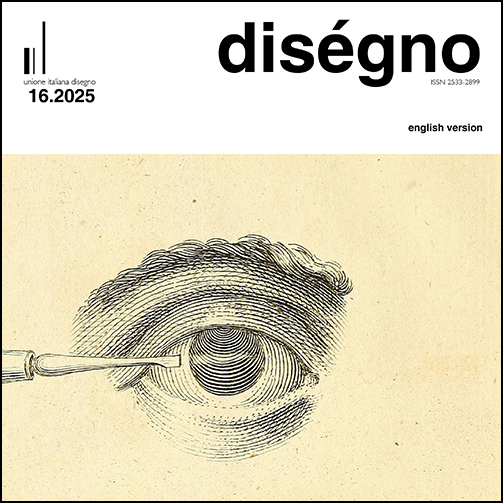The Drawing of Objects with a High Aesthetic Function. Bruno Munari’s Travel Sculptures, a Restless Lexicon
DOI:
https://doi.org/10.26375/disegno.16.2025.19Keywords:
travel sculpture, survey, drawing, design, MunariAbstract
The present contribution describes the research work to catalogue and study that system of objects, multiples and mass-produced, to which Munari gave the name Travel Sculptures, which he created from 1958 onwards in a constant and tireless search for a balance between form and meaning, between utility and aesthetic function, between art and design. In the taxonomic reading of the master’s production and above all through the decoding operations performed by the drawing, the sculptures appear to be objects that revolutionise the way of looking at things: based on the ‘co-presence of variants’, what is observed is not a single subjective and definitive image, but a multitude of images in continuous variation; not a single form but a series of forms in movement.
Through the operations of interpretation of the approximately 40 sculptures, traced through research in the multi-source literature, which shows their strong critical historical impact, they have been redesigned and decoded through an actual survey carried out on the images collected and catalogued according to chronological criteria, referring to material, size, etc. As will be seen, the design of the artefacts is crossed by the multiple dynamics of observation and use, by the relationship with space, by the action of opening and closing, by the discontinuity of the material, by light and shadows, by movement and stillness, restoring a particular language that is never monotonous, at times ambiguous and discordant, variegated, that in the graphic sign seeks its state of stillness.
References
Alicata, M. (2022). Olivetti ispira i giovani. Le ragioni della mostra Arte Programmata. Arte cinetica, opere moltiplicate, opera aperta, Milano 1962. In Piano B. Arti E Culture Visive, Vol. 7, N°. 2, pp. 1–21. <https://doi.org/10.6092/issn.2531-9876/16340> (accessed 12 June 2025).
Anceschi, G. (1992). L’oggetto della raffigurazione. Milano: Etaslibri.
Bartorelli, G. (2017). Bruno Munari: aria | terra. Milano: Corraini.
Carter, D.A. (2019). Le sculture da viaggio di Munari. Milano: Corraini.
Dellapiana, E. (2024). Colore, pieghe e giunti: kit di sopravvivenza per aspiranti designer (e storici). In M. Meneguzzo, S. Roffi (a cura di). Bruno Munari tutto, pp. 44, 45. Milano: Dario Cimonelli Editore.
Eco, U. (1961). La forma dell’ordine. In S. Morando (Ed.). Almanacco Letterario Bompiani. Le applicazioni dei calcolatori elettronici alle scienze morali e alla letteratura, pp. 175-188. Firenze: Bompiani.
Maldonado, T. (2007). Reale e virtuale. Milano: Feltrinelli Editore.
Meneguzzo, M., Roffi S. (a cura di). (2024). Bruno Munari tutto. Milano: Dario Cimorelli Editore.
Munari, B. (2009). Design e comunicazione visiva. Bari: Laterza.
Munari, B. (2017). Codice ovvio. Milano: Corraini.
Purini (2007). Una lezione sul disegno. Roma: Gangemi.
Downloads
Published
How to Cite
Issue
Section
License
Copyright (c) 2025 diségno

This work is licensed under a Creative Commons Attribution 4.0 International License.






